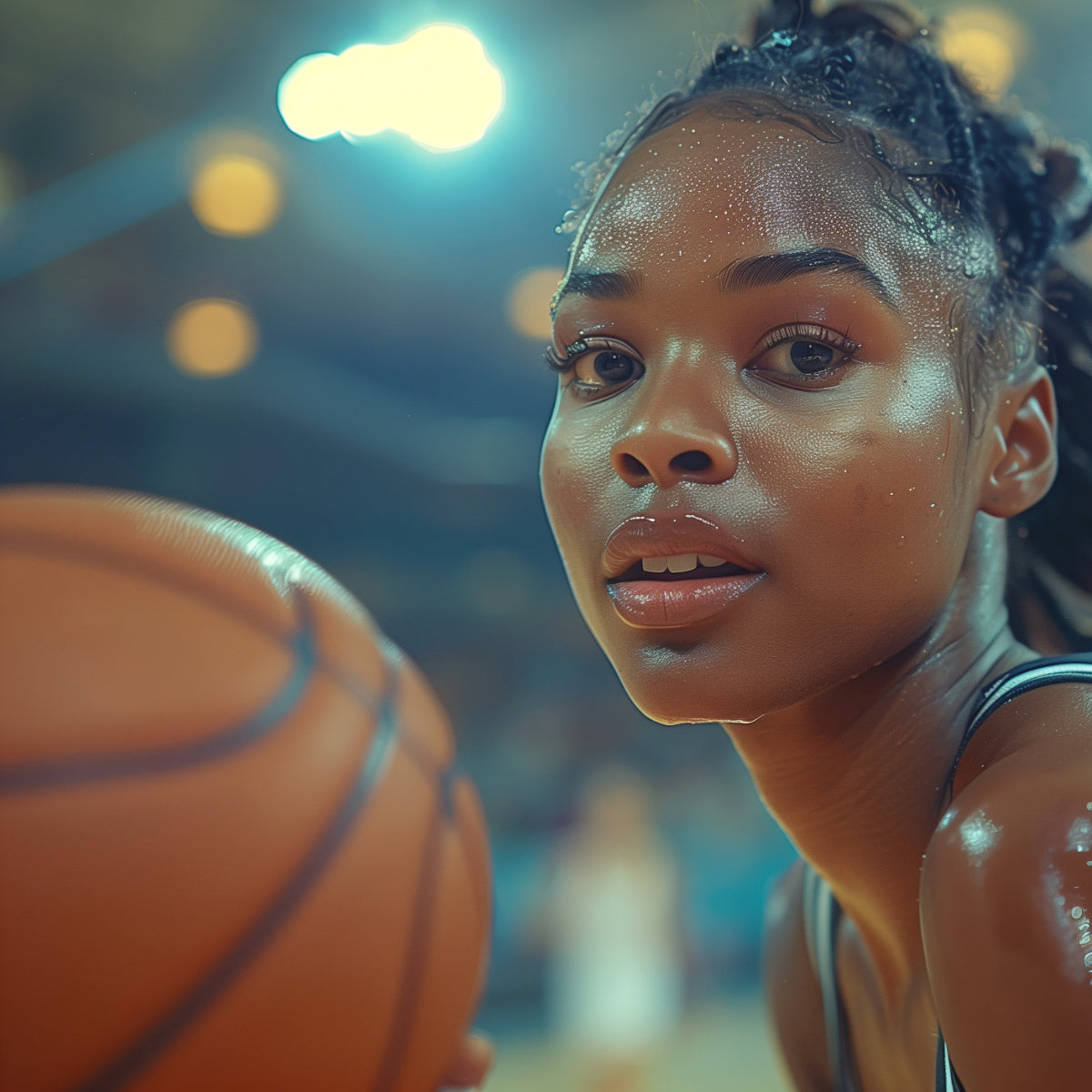
Women's Sports Surge: Examining the Rapid Growth, and Increased Visibility in Popularity of Female Athletes
Introduction
The landscape of women's sports has undergone significant transformations in recent years, marked by substantial growth in visibility and sponsorship, with live sports broadcasting like ESPN playing a crucial role. This surge is reshaping the way female athletes and women's competitions are perceived and celebrated globally.
A prime example of this shift was evident in the recent 2023 FIFA Women's World Cup, co-hosted by Australia and New Zealand, where record-breaking viewership numbers demonstrated the increasing popularity and commercial viability of women's sports. This event not only showcased top-tier athletic performance but also highlighted the burgeoning support for female athletes on an international stage.
With growing audiences, enhanced media coverage, and an upward trend in sponsorships, the narrative around women’s sports is evolving. This blog post delves into the current state of women’s sports, exploring the significant strides made and the challenges that remain, illustrating why now, more than ever, the support for women's sports is a crucial aspect of gender equality in athletics.
Current Landscape of Women's Sports: From WNBA and NCAA to the World Cup—Tracking Viewership and Highlights of Major Events
The State of Women's Sports Today
Women's sports have seen unprecedented growth in both visibility and participation across the globe. This rise is not only evident in the surge of viewership but also in the increasing number of women participating at all levels, from grassroots to professional leagues. For instance, the recent Women’s World Cup not only broke previous attendance records but also set new benchmarks for global viewership, highlighting the expanding audience base for women's sports.
Participation levels are climbing, as schools, universities, and communities invest more in women's sports programs, drawing inspiration from successes such as Iowa's basketball team. This investment has paid off in the form of competitive performances that captivate global audiences. For example, the NCAA women's basketball tournament and the Women's National Basketball Association (WNBA) have seen significant increases in both attendance and television viewership, reflecting a growing interest that extends beyond the traditional boundaries of men's sports.
Recent successes, such as the WNBA's latest draft and the performances of the U.S. women's soccer team, underscore the quality of competition and the professional opportunities now available. Notably, the 2022 title game for women's college basketball showcased remarkable talent and drew millions of viewers. These achievements are not only celebrated in sports media but are also inspiring a new generation of female athletes. The narrative around women’s sports is changing, characterized by a growing appreciation and recognition of female athletes' prowess and the increasing commercial viability of women's sports.
Sponsorship and Financial Opportunities in Women's Sports: Impact of the World Cup, NBA, and Volleyball Championship Games on Viewership and Revenue
Sponsorship Trends in Women’s Sports
The landscape of sponsorship in women's sports has dramatically shifted in recent years, showing a promising trend of increased investment and brand partnerships. Major brands are recognizing the value of associating with female athletes and women's competitions, seeing them not only as ambassadors of sport but also as influential figures in promoting social change.
Financial backing for women's sports has climbed, with companies from diverse sectors investing millions into leagues, teams, and individual athletes. This influx of funds is not just enhancing the quality and competitiveness of women's sports but is also providing more stable careers for female athletes. For instance, notable apparel and footwear companies have expanded their endorsements, while consumer goods firms are now regular sponsors of major tournaments and teams.
The impact of this increased financial backing is profound. It has enabled more extensive training facilities, better travel arrangements, and more competitive salaries for players. The WNBA's recent contract renegotiations, which significantly improved salary caps and travel conditions for the players, serve as a prime example of what financial growth can achieve in women's sports. These advancements contribute to not only the athletes' performance but also their well-being, setting a new standard for how female athletes are supported.
Furthermore, the collaboration between brands and female athletes is going beyond traditional sponsorships to include partnerships that address wider societal issues, such as gender equality and empowerment. These partnerships are reshaping how sponsorships are viewed in the realm of sports, turning them into platforms for advocacy and positive change.
Media Coverage and Broadcasting Rights: Examining the Impact of High-Profile Events Like the Final Four on Viewership and Sports News
Broadcasting Women's Sports: Progress and Challenges
The media landscape for women's sports has evolved significantly over the past decade, showing promising progress yet facing ongoing challenges. Increased media coverage has played a pivotal role in elevating women's sports, bringing them to a wider, more diverse audience and enhancing their visibility and viability as a commercial product.
Notably, digital platforms have become a game-changer in broadcasting women's sports. Streaming services and social media platforms offer alternative avenues for broadcasting games and competitions, breaking the traditional barriers that limited exposure. These platforms not only increase the reach but also allow for more flexible and engaging content delivery, such as behind-the-scenes footage, athlete vlogs, and interactive fan engagement, which are particularly popular among younger demographics.
However, despite these advancements, challenges remain. The allocation of broadcasting rights often still favors men’s sports, which are perceived as more lucrative, despite the fact that millions of people watched the women's basketball title game in 2022. This discrepancy results in unequal airtime and investment. For example, major networks like ESPN may still relegate women's sports to less favorable times or fewer prominent channels despite their growing popularity. This unequal treatment can impact sponsorship deals and overall revenue for women’s leagues and athletes.
The recent increase in viewership for events like the Women’s World Cup and the WNBA finals highlights the untapped potential of women's sports. These events have set viewership records, challenging the notion that women's sports are less appealing to broad audiences.
Going forward, the fight for equal broadcasting rights continues as advocates push for parity in media coverage, which is essential not only for the growth of women's sports but also for the promotion of gender equality within sports media.
Advocacy and Equality Efforts: How High-Profile Sporting Events Featuring Caitlin Clark Influence Millions Viewers
Pushing for Equality: Advocacy in Women's Sports
The movement for gender equality in sports has gained significant momentum, fueled by the dedicated efforts of athletes, organizations, and activists. These efforts are pivotal in challenging the historical norms and advocating for equitable treatment and opportunities for female athletes across all levels of competition, enhanced by the visibility of events like the wnba draft.
Numerous campaigns and legal battles have been instrumental in this pursuit. Notably, the implementation of Title IX in the United States has been a cornerstone in promoting gender equality in college sports, ensuring that women receive fair access to athletic opportunities. Globally, organizations like the Women's Sports Foundation and the International Working Group on Women and Sport have been at the forefront, lobbying for changes and supporting initiatives that empower women through sports.
Athletes themselves have also played a crucial role. Stars like Megan Rapinoe, Serena Williams, and guard Caitlin Clark have used their platforms to speak out against disparities in pay and media coverage, bringing widespread attention to the issues. Their advocacy extends beyond speeches, involving participation in lawsuits and partnerships with global brands to highlight and address these inequalities.
Moreover, grassroots movements and local sports clubs are increasingly organizing workshops and outreach programs aimed at young girls, encouraging them to participate in sports and educating them about their rights within the sports domain. These programs not only cultivate new talent but also build a supportive community that advocates for continued progress toward equality.
These concerted efforts are reshaping the landscape of women's sports, making strides toward a future where sports provide equal opportunities for all, regardless of gender.
Future Outlook: Anticipating Trends as Million Viewers Watched Transform the Landscape of Sports
What Lies Ahead for Women’s Sports
The future of women's sports holds both immense promise and significant challenges that need strategic handling to sustain the current growth trajectory. As visibility and investment continue to increase, the landscape of women's sports is poised for transformative changes that could redefine athletic participation and viewership.
Technological advancements will likely play a pivotal role in this evolution. Innovations such as AI-enhanced analytics, virtual reality training systems, and enhanced digital platforms are expected to improve athlete performance, fan engagement, and global accessibility to women’s sports events. These technologies could democratize access to sports, allowing young athletes from remote or underserved regions to participate and excel, much like Iowa phenom guard Caitlin Clark's rise to prominence.
However, the road ahead is not without its obstacles. Issues such as equal pay, comprehensive media coverage, and consistent sponsorship must be addressed more vigorously. Advocacy and legal efforts need to be bolstered to ensure that progress in gender equality is not only maintained but accelerated. The global sports community must remain vigilant and proactive, pushing for policies that facilitate rather than hinder the growth of women's sports.
Furthermore, cultivating a supportive culture that celebrates and respects female athletes is crucial. Education and community engagement programs that emphasize the importance of women's sports can help shift public perceptions and build a more inclusive sports environment, similar to the enthusiastic support seen for the basketball team at LSU.
As we look forward, it's clear that maintaining this momentum will require a concerted effort from all stakeholders involved, pushing for more live sports coverage of women's competitions on major networks like ESPN. It is not just about sustaining growth but about creating an equitable sporting world where female athletes receive the recognition and respect they rightfully deserve.
Conclusion
Throughout this discussion, we have explored the transformative journey of women's sports, marked by notable advancements in visibility, sponsorship, and media coverage, including ESPN's commitment to broadcasting more live sports featuring women. The growth trajectory of women's sports is not only reshaping the landscape of athletic competition but also strengthening the foundation for gender equality within the sports domain.
From the surging trends in sponsorship that fuel financial stability, to the expansion of media rights that ensure broader and more equitable coverage, women's sports are on a clear path to gaining the recognition they deserve. Advocacy and legal efforts continue to play critical roles in this evolution, pushing against longstanding barriers and advocating for systemic changes that support female athletes worldwide.
However, the journey is far from over. As we look to the future, the sports community must remain vigilant and proactive in nurturing this growth. Supporting local women's sports teams and events not only helps sustain this momentum but also builds a vibrant community that values and celebrates female athletes. Whether through attending games, advocating for policy changes, or simply spreading the word, every action contributes to the enduring success of women's sports, including supporting events like the wnba draft.
I invite you to join in this ongoing conversation. Share your thoughts, experiences, or how you've supported women's sports in your community in the comments below. Let’s continue to champion the incredible athletes who inspire and empower the next generation.
Your voice and support matter—let's ensure that women's sports continue to thrive on and off the field, especially with events like the wnba draft becoming more prominent.








